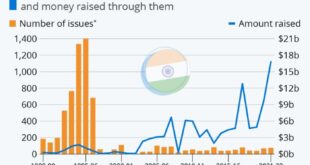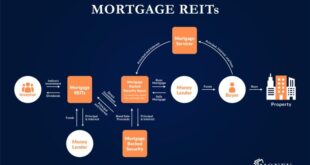The Fed delivered a best-case scenario for stocks: BofA, a statement that reverberated through the financial world. The Federal Reserve’s recent actions have sent a clear signal to investors, igniting a wave of optimism that has propelled stock markets higher.
This optimistic outlook, championed by Bank of America, stems from the belief that the Fed’s decision, while not without its complexities, has positioned the economy for a more favorable trajectory.
This article delves into the intricacies of the Fed’s decision, exploring its impact on the stock market, the economy, and the investment landscape. We’ll examine the rationale behind BofA’s bullish assessment, dissecting the data points that underpin their perspective.
We’ll also analyze the market’s immediate response, the prevailing investor sentiment, and the potential implications for the future.
The Fed’s Decision and its Impact on the Stock Market

The Federal Reserve’s recent decision to maintain interest rates and signal a pause in its aggressive tightening cycle has been met with a wave of optimism from Wall Street, with many analysts, including those at Bank of America, viewing it as a “best-case scenario” for stocks.
This positive outlook is fueled by the belief that the Fed’s actions will provide much-needed support for the economy and financial markets, while also avoiding any potential risks associated with overly aggressive rate hikes.
The Fed’s Actions and their Positive Implications
The Fed’s decision to hold rates steady, coupled with its indication of a pause in future rate increases, is being interpreted as a sign that the central bank is acknowledging the potential for a slowdown in economic growth. This shift in stance is seen as a positive development for stocks, as it suggests that the Fed is less likely to aggressively tighten monetary policy, which could potentially stifle corporate earnings and economic activity.
BofA’s Rationale for a Bullish Outlook
Bank of America’s bullish outlook on the stock market is based on several key factors, including the Fed’s decision to pause rate hikes, the resilience of the US economy, and the potential for continued corporate earnings growth. The bank’s analysts believe that the Fed’s current stance will provide a more supportive environment for the stock market, allowing investors to focus on the fundamentals of the economy and corporate earnings.
Supporting Evidence for BofA’s View
BofA’s view is supported by several data points, including:
- Resilient Economic Growth:The US economy has demonstrated resilience in the face of rising interest rates and inflation, with recent economic data indicating continued growth and a strong labor market.
- Strong Corporate Earnings:Corporate earnings have remained robust, with many companies reporting strong profits despite challenging economic conditions. This suggests that businesses are able to navigate the current environment and continue to generate strong returns for investors.
- Potential for Continued Growth:The Fed’s decision to pause rate hikes could potentially lead to a further acceleration in economic growth, as businesses and consumers are less likely to be constrained by higher borrowing costs.
Market Reactions and Investor Sentiment
The Fed’s announcement was met with a surge of optimism in the stock market. The Dow Jones Industrial Average and the S&P 500 both rallied significantly, reflecting investors’ confidence in the Fed’s ability to navigate the economic landscape. This positive response underscored the market’s anticipation of a continued economic recovery and its belief in the Fed’s commitment to supporting growth.
Investor Sentiment Before and After the Fed’s Announcement
The Fed’s decision to maintain interest rates and its optimistic outlook on the economy injected a dose of confidence into the market, shifting investor sentiment from cautious to optimistic. Before the announcement, investors were grappling with concerns about inflation, rising interest rates, and the potential for a recession.
The Fed’s dovish stance alleviated these anxieties, prompting investors to embrace a more bullish outlook. This shift in sentiment was evident in the increased buying activity and the rise in stock prices.
Economic Implications and Outlook
The Fed’s decision to maintain interest rates carries significant implications for the US economy. While the decision aims to curb inflation and support economic growth, its impact on various sectors and economic indicators remains a subject of ongoing analysis.
Impact on Inflation
The Fed’s decision to hold rates steady reflects its ongoing efforts to combat inflation. Maintaining rates at their current level could help to cool down the economy and slow down price increases. However, the effectiveness of this strategy depends on various factors, including consumer spending patterns, supply chain disruptions, and global economic conditions.
If inflation remains stubbornly high, the Fed might be forced to reconsider its stance and implement further rate hikes in the future.
Remember to click Kirby Corp exec VP sells shares valued at $361k to understand more comprehensive aspects of the Kirby Corp exec VP sells shares valued at $361k topic.
Impact on Interest Rates
The Fed’s decision to hold rates stable suggests that the central bank believes the current level is sufficient to control inflation. However, this decision could also influence other interest rates in the economy, such as mortgage rates and borrowing costs for businesses.
Stable rates might encourage businesses to invest and expand, leading to economic growth. However, it could also lead to higher borrowing costs for consumers and businesses, potentially impacting spending and investment decisions.
Impact on Economic Growth, The Fed delivered a best-case scenario for stocks: BofA
The Fed’s decision to maintain rates reflects its commitment to supporting economic growth while addressing inflation concerns. Stable rates could encourage investment and spending, contributing to economic expansion. However, the effectiveness of this strategy depends on factors such as consumer confidence, business sentiment, and global economic conditions.
If economic growth slows down significantly, the Fed might consider lowering rates to stimulate economic activity.
Impact on Different Sectors of the Economy
The Fed’s decision to hold rates steady could have a mixed impact on different sectors of the economy.
- For example, the housing market might benefit from stable mortgage rates, encouraging home purchases and refinancing activities. However, higher borrowing costs for businesses could impact investment and job creation, potentially slowing down economic growth in the long term.
- The energy sector might see increased investment due to stable rates, leading to greater oil and gas production. However, higher borrowing costs could make it more expensive for companies to develop renewable energy projects, potentially slowing down the transition to a greener economy.
Key Economic Indicators and Their Potential Impact
| Indicator | Potential Impact |
|---|---|
| Inflation Rate | The Fed’s decision aims to control inflation, but the effectiveness of this strategy remains uncertain. If inflation remains high, the Fed might be forced to raise rates in the future. |
| Unemployment Rate | Stable interest rates could support economic growth, leading to lower unemployment. However, higher borrowing costs for businesses could impact job creation, potentially leading to higher unemployment. |
| Gross Domestic Product (GDP) | Stable rates could encourage investment and spending, contributing to economic growth. However, if economic growth slows down significantly, the Fed might consider lowering rates to stimulate economic activity. |
Alternative Perspectives and Considerations
While the Fed’s decision might seem like a positive signal for the stock market, it’s crucial to consider alternative viewpoints and potential risks associated with this move. The market’s response is not guaranteed, and several factors could influence its trajectory.
Potential Risks and Uncertainties
The Fed’s decision to pause rate hikes could be perceived as a sign of economic weakness, potentially leading to investor concerns about future growth prospects. While the Fed aims to tame inflation, the risk of an economic slowdown remains a concern.
“The Fed’s decision to pause rate hikes could be a double-edged sword. While it might boost the stock market in the short term, it could also signal a weakening economy, leading to future uncertainty.”
Factors Influencing the Stock Market’s Response
The stock market’s reaction to the Fed’s decision will depend on various factors, including:
- Inflation Trajectory:If inflation continues to fall, the Fed’s decision might be viewed favorably. However, if inflation remains stubbornly high, investors might become concerned about the Fed’s ability to control it.
- Economic Growth Outlook:The stock market thrives on growth. If economic growth weakens despite the Fed’s pause, investors might become pessimistic, leading to a decline in stock prices.
- Corporate Earnings:Strong corporate earnings are essential for stock market performance. If companies start reporting weak earnings, the Fed’s decision might not be enough to offset the negative sentiment.
- Geopolitical Events:Global events, such as the ongoing war in Ukraine, can significantly impact investor sentiment and stock market performance.
Different Perspectives on the Fed’s Decision
| Perspective | Key Argument | Potential Impact on Stocks |
|---|---|---|
| Optimistic | The Fed’s decision is a sign of confidence in the economy, indicating that inflation is under control and growth is sustainable. | Higher stock prices as investors become more optimistic about the future. |
| Pessimistic | The Fed’s decision might signal a weakening economy, leading to concerns about future growth prospects and corporate earnings. | Lower stock prices as investors become cautious about the market’s future. |
| Neutral | The Fed’s decision is a temporary pause, and further rate hikes are likely in the future. The impact on stocks will depend on the economic data and inflation trends. | Stock prices may remain relatively stable, with short-term fluctuations based on economic data and inflation. |
Strategies for Investors
The Fed’s decision, while seemingly positive for the stock market, presents a complex landscape for investors. Navigating this terrain requires a careful assessment of potential risks and rewards, coupled with a strategic approach to portfolio allocation.
Portfolio Positioning Strategies
The Fed’s actions, while intended to stimulate economic growth, also carry the potential for inflation and higher interest rates. Investors need to consider these factors when positioning their portfolios.
- Value Stocks:Value stocks, companies trading below their intrinsic worth, often benefit from rising interest rates. These companies tend to be more mature and generate strong cash flows, making them attractive in a higher interest rate environment.
- Defensive Sectors:Sectors like healthcare and consumer staples, which are less sensitive to economic cycles, can provide stability in a volatile market. These sectors are typically less affected by interest rate changes and offer a degree of protection against economic downturns.
- Short-Term Bonds:Short-term bonds offer lower yields than long-term bonds, but they are less sensitive to interest rate fluctuations. In a rising interest rate environment, investors may consider shifting towards shorter-duration bonds to mitigate potential losses.
Potential Beneficiary Sectors
Certain sectors are expected to thrive in the current economic environment, fueled by the Fed’s decision.
- Technology:The technology sector, characterized by its growth potential and innovation, is likely to benefit from continued investment and a favorable economic climate.
- Energy:With the global economy rebounding, demand for energy is expected to rise. This could translate into increased investment and higher prices for energy companies.
- Financials:Rising interest rates can boost the profitability of banks and other financial institutions.
Investment Strategies and Risk-Reward Considerations
Investors can employ various strategies to navigate the market, each carrying its own risk-reward profile.
- Active Management:Active management involves actively buying and selling securities based on market analysis and predictions. This strategy aims to outperform the market by identifying undervalued opportunities and avoiding underperforming assets. However, active management carries higher costs and requires greater expertise.
- Passive Investing:Passive investing, such as index tracking, aims to replicate the performance of a specific market index. This strategy typically involves lower costs and requires less active management, making it suitable for long-term investors.
- Growth Investing:Growth investing focuses on companies with high growth potential, often in emerging industries or with innovative products. This strategy can generate significant returns but carries higher risk, as growth companies are often more volatile.
- Value Investing:Value investing seeks to identify undervalued companies with strong fundamentals. This strategy aims to capitalize on market inefficiencies and can provide long-term returns, but it requires thorough research and patience.
Final Conclusion
The Fed’s decision, as interpreted by BofA, has painted a compelling picture for stocks. While the economic landscape remains dynamic, the Fed’s actions have injected a dose of confidence into the market, suggesting a path towards sustained growth. Investors, armed with this newfound optimism, are now navigating the complexities of the market, seeking opportunities that align with the evolving economic landscape.
The future, while uncertain, holds the promise of a more robust market, driven by the Fed’s calculated approach.
FAQ Overview: The Fed Delivered A Best-case Scenario For Stocks: BofA
What specific actions did the Fed take that are considered a “best-case scenario” for stocks?
The Fed’s decision to maintain interest rates at their current level, coupled with a pause in further rate hikes, has been interpreted as a positive signal for the stock market. This decision suggests that the Fed is willing to support economic growth without aggressively tightening monetary policy, which could potentially stifle growth and negatively impact corporate earnings.
How does BofA’s assessment of the Fed’s decision differ from other viewpoints?
While some analysts believe that the Fed’s decision may not be enough to stimulate economic growth, BofA maintains a more optimistic stance, citing the potential for a “soft landing” where inflation gradually declines without causing a recession.
What are the potential risks associated with the Fed’s decision?
The Fed’s decision to pause rate hikes could lead to higher inflation if it fails to control price increases effectively. Additionally, there is a risk that the Fed’s actions may not be sufficient to stimulate economic growth, leading to a period of stagnation or even a recession.
 CentralPoint Latest News
CentralPoint Latest News




